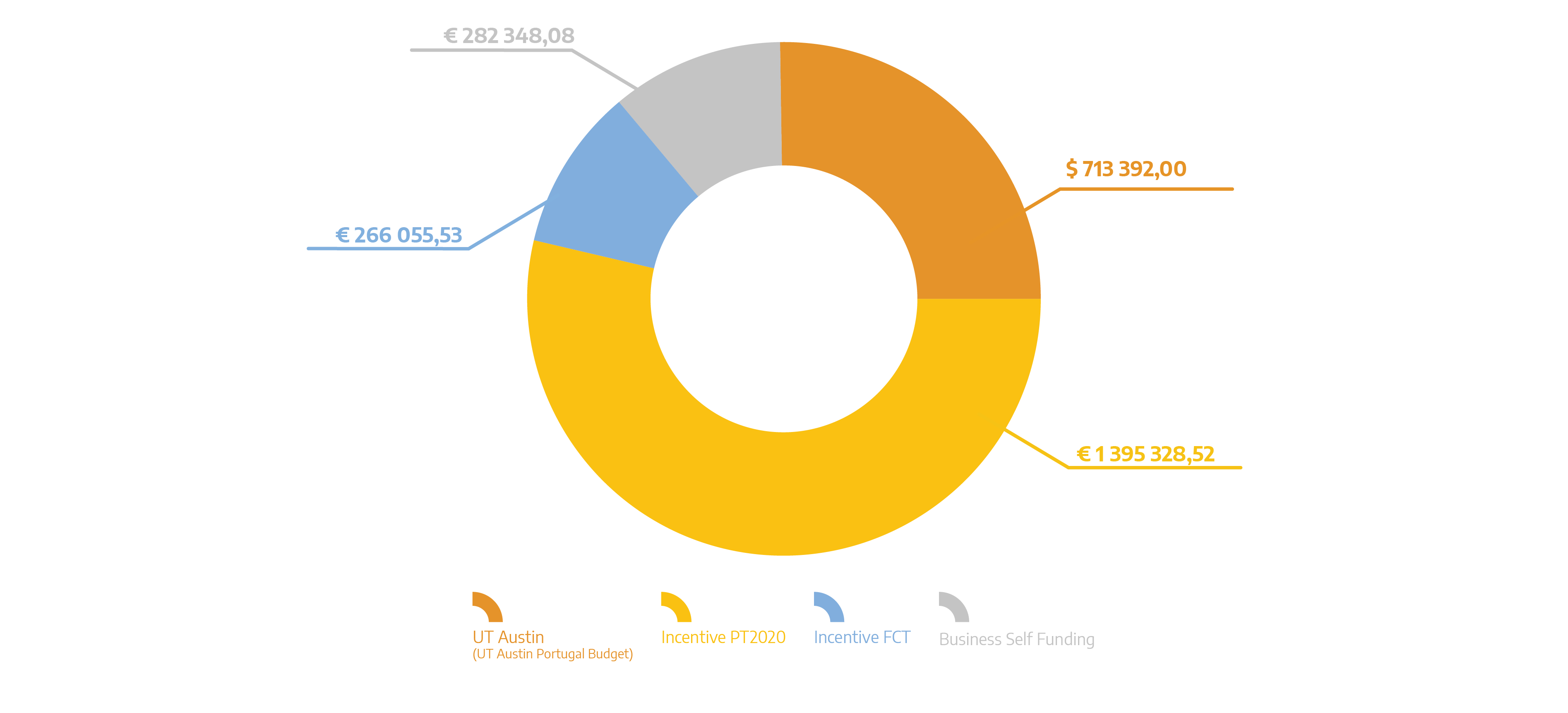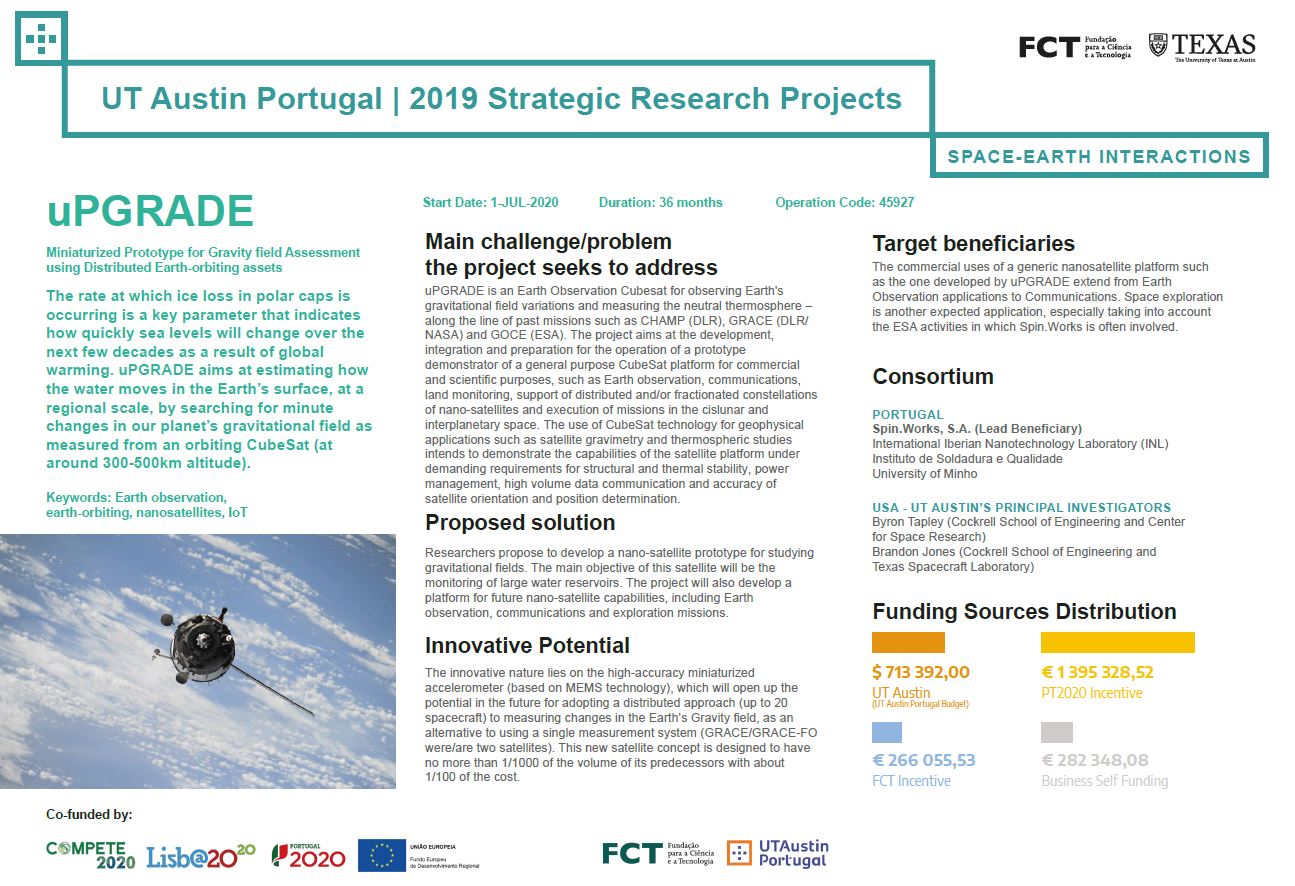(Closed) uPGRADE – Miniaturized Prototype for GRavity field Assessment using Distributed Earth-orbiting assets - UT Austin Portugal (original) (raw)
Summary
The velocity at which permanent ice loss in polar caps is occurring is a key parameter that indicates how quickly sea levels will change over the next few decades as the result of global warming. uPGRADE aims at precisely estimating how the water moves in the Earth’s near surface, at a regional scale, by searching for minute changes in our planet’s gravity acceleration as measured from an orbiting instrument (at around 300-500km altitude).
This will primarily entail the development of a miniaturized (MEMS) space accelerometer – the mission’s primary instrument – with the goal of having an accuracy on the order of 20nm/s2 – a scale comparable to much larger devices used in prior missions for the same purpose (ESA’s GOCE and NASA’s GRACE missions), but at a small fraction of the cost.
The teams at UT Austin and in Portugal will also collaborate to develop a self-stabilizing, miniaturized spacecraft with low-thrust propulsion that carries the high-accuracy accelerometer and insulates it from most sources of perturbation in order to ensure the science mission is successful: acquiring of acceleration measurements, along with precise GPS measurements and other telemetry data, to enable the precise reconstruction of the Earth’s varying gravity field.
As a secondary goal, this project will also develop a generic, high-performance nanosatellite platform applicable to a broad set of commercial Earth Observation, communications, and space exploration missions and constellations.
Expected Outcomes
- A commercial high-accuracy space miniaturized accelerometer;
- Space qualification of a commercial miniaturized Star Tracker for nanosat missions ;
- A miniaturized, multi-purpose, radiation-tolerant On Board Computer (OBC) for nanosatellites, micro-launchers and drones;
- An ultra-low-cost (<<1MEur), commercial, generic nanosatellite platform to be used in future EO and Communication (IoT) constellations, as well as for in-orbit scientific instruments and technology demonstrations.
| Start Date – End Date: | July 1, 2020 – June 29, 2023 |
|---|---|
| Scientific Area: | Space-Earth Interactions |
| Keywords: | Earth observation, earth-orbiting, nanosatellites, IoT |
| Lead Beneficiary (PT): | Spin.Works S.A. |
| Co-beneficiaries: | Laboratório Ibérico Internacional de Nanotecnologia (LIN) Instituto de Soldadura e Qualidade Universidade do Minho |
| PIs at UT Austin: | Byron Tapley (Cockrell School of Engineering, Aerospace Engineering and Engineering Mechanics Department and Center for Space Research, UT Austin) Brandon Jones (Cockrell School of Engineering, Aerospace Engineering and Engineering Mechanics Department and Texas Spacecraft Laboratory, UT Austin) |
| Total Eligible Investment (PT): | 1 943 732,13 EUR |
| Total Eligible Investment (US): | 713 392,00 USD |
| Funding Sources Distribution: |

E-Posters
2020 Annual Conference (pdf.)

In The News
Co-funded by: